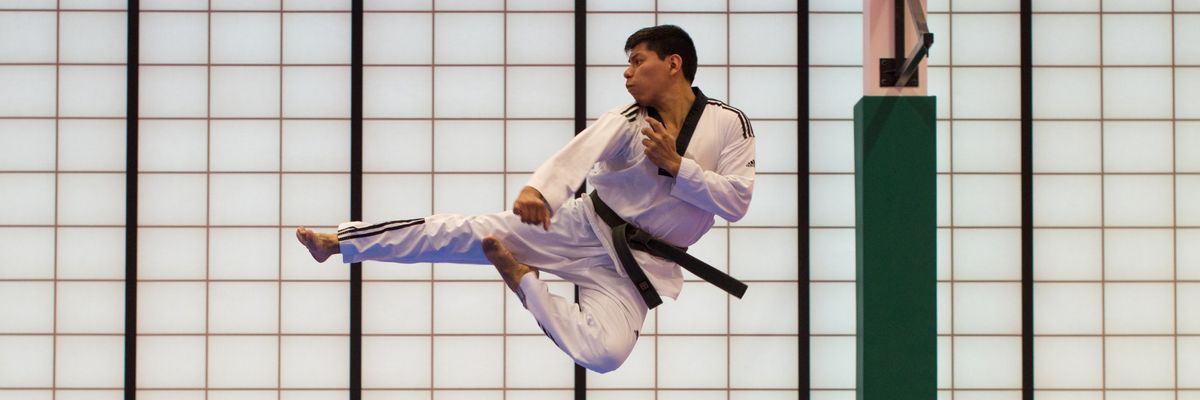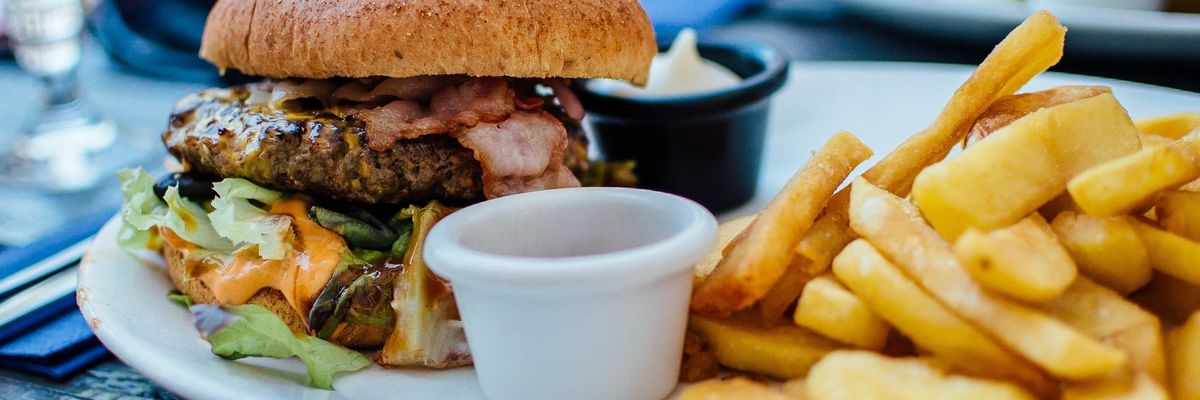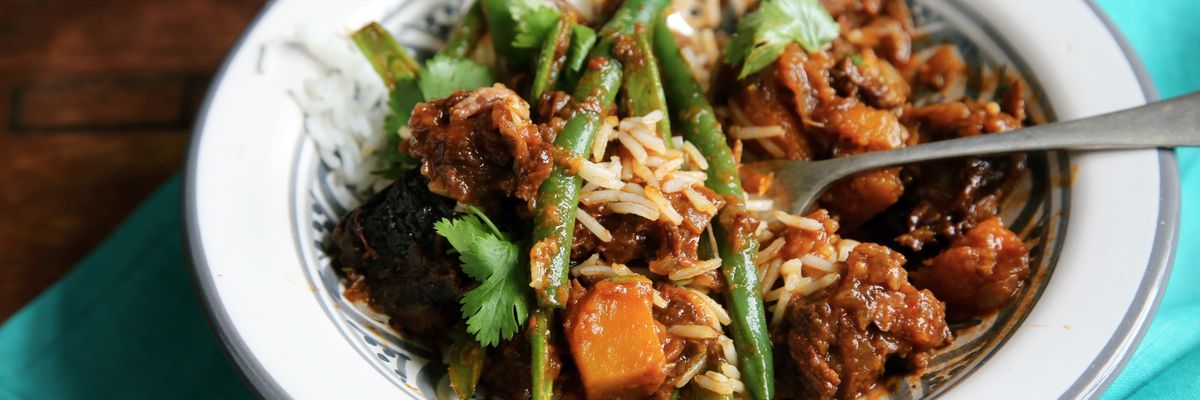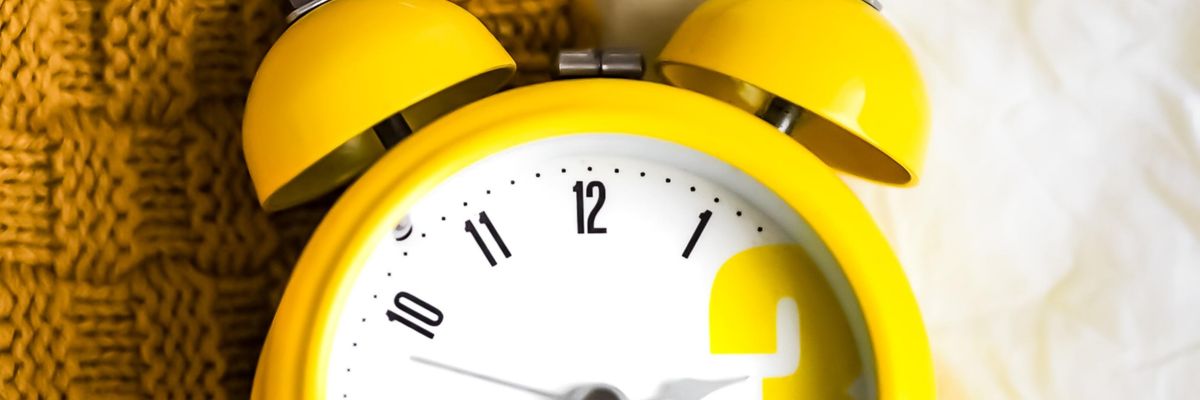Cooked food on black bowl
Athletes are inundated with information on how to train and recover; they don't need the added pressure of dietary information overload. Food choices affect performance, but too often we get caught up in looking for the magic bullet and honing in on specifics only to ignore the big picture.
The truth is, the majority of people seeking fitness gains benefit from backing off a bit and getting back to basics — for example: Consuming a routine diet that includes a variety of colorful, nutritious whole foods.
1. TRACK FOR ENERGY INTAKE

Man doing karate stunts on gym
Photo by Uriel Soberanes on UnsplashEnergy intake relative to exercise energy expenditure is known as energy availability. It could be tempting to up exercise without increasing the fuel to support the effort in order to get lean. However, too many athletes succumb to over-restriction and caloric deficits, which results in the body being forced to use lean tissue as fuel. Ultimately, this hinders performance and body composition.
Instead of micromanaging macronutrient breakdown, milligrams of a specific vitamin, or supplement intake, aim to have a daily balance of calories you consume versus burn. Ensuring your overall energy needs are being met is a huge game changer in how you feel and consequently how you perform.
2. REDUCE THE JUNK

Selective focus photography of burger patty, mayonnaise, and French fries served on platter
Photo by Robin Stickel on UnsplashAll foods can fit into an overall healthy diet, however, consuming foods low in nutrient density is like loading up on the 'junk miles' in your workouts. It's fuel, but it isn't making you any better. Aim to reduce the amount of low nutrient density foods consumed day to day. The best athletes indulge occasionally, but know 80% of their intake should be high-quality calories — Think: complex carbohydrates, plant proteins, omega and unsaturated fatty acids and colorful produce — to best fuel their health and performance needs. Skipping packaged foods is the best way to start eliminating poor quality foods.
3. BUILD YOUR PLATE

Meat with vegetable on plate
Photo by Caroline Attwood on UnsplashA great place to start simplifying your diet is to focus on balance, and the plate method is a great example of how to do this. Instead of measuring or weighing your food, you can use the plate's template to add protein, carbohydrates (grains or starchy vegetables) and produce, in the designated areas. This method focuses on balance — having different food types represented — and since each food type has its place, portion control comes naturally. It also provides some structure without being overbearing or restrictive. Start with a simple meal of grilled chicken, sweet potato and a salad drizzled with vinaigrette, before exploring more adventurous meals.
4. STICK TO A ROUTINE

Yellow and white alarm clock at 10 10
Photo by Laura Chouette on UnsplashMake day-to-day eating easy by sticking to a handful of high-quality meal or ingredient staples. Many professional and elite athletes eat the same meals and reach for the same snacks repeatedly. This helps reduce decision fatigue and stress, factors that increase low level inflammation and potential weight gain — the opposite of what most athletes want.
Make a list of three meals you fall back on for breakfast, lunch and dinner. Rotating the same few meals makes shopping and meal prep easy.
| Breakfast | Lunch | Dinner |
|---|---|---|
| Oatmeal with berries and yoghurt | Chopped chicken salad | Peanut tempeh with mixed vegetables and quinoa |
| Whole-grain toast with avocado and eggs | Bean burrito bowl | Steak with baked sweet potato and green beans |
| Tofu scramble burrito with fruit | Turkey and hummus on whole-grain bread with an apple and yoghurt | Salmon poke bowl with brown rice |

The fear of heat damage has been instilled in me since I went natural six years ago. Since then, I vowed to take my hair health seriously and put that above all else, unfortunately, straightening my hair didn’t seem to align. People will constantly tell me, “Don’t straighten your hair, it’ll mess up your curls.” I heard this so much that it made me nervous every time I had to do it.
However, I would also see other naturals wear their hair straight, only for it to revert right back to its tight curly pattern. It made me curious, and I started to ask different natural hair stylists whether the myth was true. They all responded, “You can, but not too much.”
In case you're like I was and are a little hesitant about applying heat to your hair out of fear of damage, I want to debunk a lot of the hair-straightening myths so you don’t have to be afraid to switch up your style every now and then. Here’s the truth about heat on natural hair and how to prevent damage.

Straightening Your Hair Isn’t Bad
Don’t listen to the naysayers, the only person you should listen to is your stylist. If you’re considering switching up your curly hairstyles for something sleekier, your stylist will guide you and give you tips on the best way to do that.
One of the benefits of natural hair is that it’s typically stronger and has high elasticity to fight breakage and damage. Plus, natural hair is versatile and not confined to just one style or look. In fact, my hairstylist, Aliya Abbey of Mane Mastery, says:
“One myth that I tend to see when it comes to natural hair is we need to stay away from all heat – blow drying and straightening. While some naturals prefer to avoid heat completely, it can actually work against you. Stretching the hair for trims gives more precision and a better look at the overall health of the strands, whereas curls can camouflage split ends and damage.”
There’s No Specific Rule Book
Generally, there are best practices for maintaining healthy hair, but truth be told, it’s not one size fits all. Hair texture, porosity, health, etc., all play a role in what you can do and how to do it. What may work for you may not work for others, and vice versa. Aliya continues, “Some hair strands can withstand more heat than others.”
It’s important to know your hair so you can create a routine and plan that works best for you.

Moderation and Minimization Are Key
As I mentioned before, too much of anything can be bad for you. When thinking of straightening your hair, protective styles, etc., it’s important to be aware of how often you're manipulating your hair. In general, a lot of naturals can’t keep our hands out of our hair, it kinda comes with the territory.
Implementing a low-manipulation routine can minimize breakage, create stronger hair strands, and promote hair growth. It’s not always what you do but how much you’re doing it. In terms of how often you should straighten your hair, Aliya adds that “straightening more than two times a month could cause weakness in the hair."
Use the Right Tools
I used to think all heat tools were the same. I've always based healthy straightening practices on technique. While that's true, the tools you use are just as important. The cheaper blow dryers and flat irons tend to overheat your hair or not straighten your hair well enough. When it comes to flat irons, it is best to get one where you can control the heat via temperature instead of high and low. This will allow you to see how much heat you're putting on your hair and have control.
On the other hand, if the blow dryer or flat iron isn't of quality, it will require you to pass through your strands more than necessary and possibly burn your hair. "Heat damage is caused by tools that are too hot, tools that are being passed by a section of hair too many times, and/or dehydrated hair. It's important to take note of the type of tools being used and the frequency of straightening. Don't forget to steam and hydrate!"

Heat Damage Is Preventable
One last fact about straightening natural hair is that heat damage is preventable, not inevitable. There are a few ways to avoid heat damage, one being steam and deep conditioning your hair. Doing this not only makes the strands more hydrated but also stronger.
Secondly, using a heat protectant is important. It creates a barrier between hair and heat exposure to protect your strands.
Lastly, have a professional do it. If you don't know what you're doing, get someone who does. Using the right care and technique can save you and your hair a lot of stress. Seeing a stylist who specializes in natural hair and silk presses can promote strong, healthy hair and avoid heat damage.
Don't be like me and let the unnecessary fear of heat deter you from your versatility. As long as you prioritize your hair health, you'll be okay. I follow the exact same routine with the help of my stylist, and my hair thickness, elasticity, and health have never been compromised.
Let’s make things inbox official! Sign up for the xoNecole newsletter for daily love, wellness, career, and exclusive content delivered straight to your inbox.
Featured image by Deagreez/Getty Images
The Great Report
2020 Global Report Sheet




